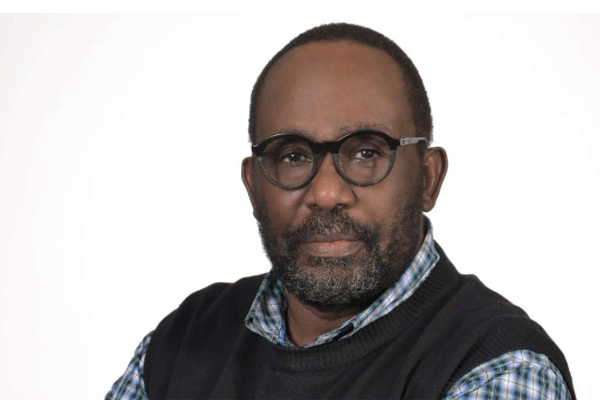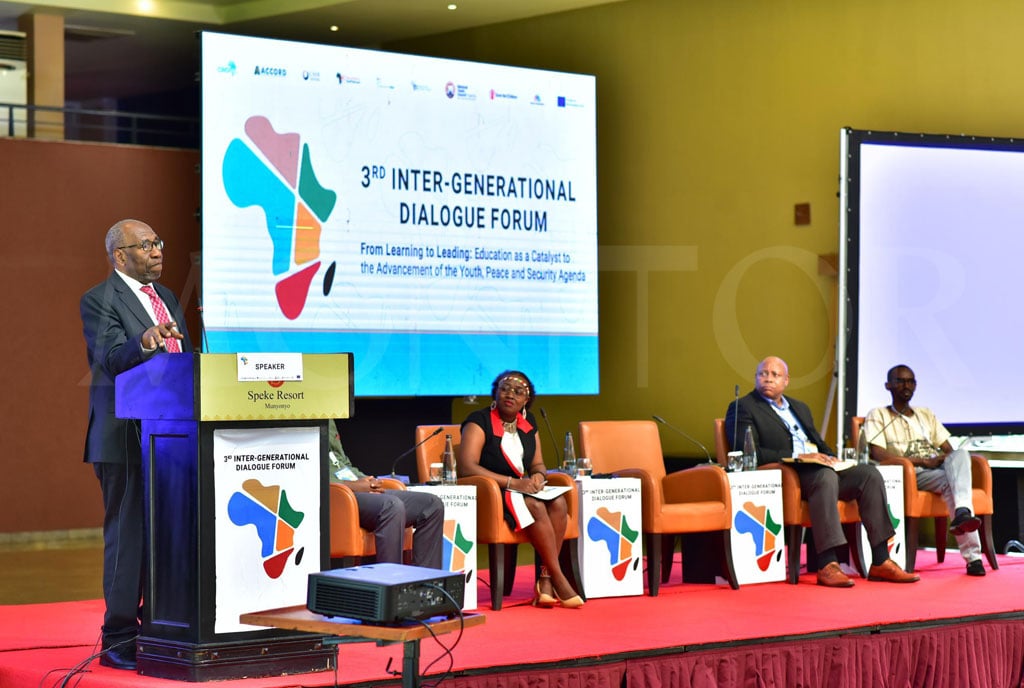Prime
When M7, Besigye, and Bobi Wine drink from same pot

Mr Charles Onyango-Obbo
What you need to know:
In all this drama, national symbols and flags have been rescued from state power, but the fight over who will plant the latter on their hill continues.
From Uganda to all four corners of Africa, there is a heated struggle for the souls of nations. It’s happening right under our noses, but many don’t realise it, because there is no blood flowing, no one being jailed, or being beaten to a pulp by soldiers.
The war is being fought over national flags, national symbols, and natural features. Look carefully. When corruption scandals break out, in Uganda and elsewhere, you will see mafia figures in expensive suits, and if you look closely, they will have a flag badge on their lapels. The opposition politicians leading the anti-corruption protests, and being bundled into the back of a police pick-up truck after being tear-gassed, are probably wearing polo t-shirts with the national flag somewhere. The young activists being splashed by police water cannons and chased over dirty trenches and fences are likely wearing bandanas with the national flag.
Presidents, ministers, opposition leaders, and civil society foot soldiers, in common, are likely to be wearing bracelets made of the national colours. Oppressor and oppressed, in the same sartorial gladiatorial arena. If they don’t have a touch of the national flag, it is something “African”, which connotes pan-Africanism and invokes memories of giants like Kwame Nkrumah, Thomas Sankara, Miria Makeba, Julius Nyerere, Bibi Titi Mohammed, et al. So, it will be a kitenge shirt or dress. If not, a plain shirt or blouse, with a splash of kitenge around the collar or the bridge.
It gets better. A while back, things like the Source of the Nile, Karuma Falls, Sipi Falls, the national parks, Lake Bunyonyi, and others were just tourism-worthy natural features. Not anymore.
Today they confer some nationalist and child-of-the-soil legitimacy and credentials too. When you are photographed in the middle of the national park with some suspicious elephants and nervous antelopes in the background, and you post it on social media, you give off an I-love-my-country vibe. Many things are going on here. The first is a nuanced change in what the nation is, and the architecture of loyalty. The national flag for decades was an instrument of state authority. For the first 15 to 30 years of independence, it was also linked closely to the nationalist movement.
However, the independence movement and its politics fizzled, discredited by the failures of the post-independence leaders and ruling parties; in Uganda’s case the Uganda People’s Congress (UPC), its many offspring, and its first army portrayed as a “colonial military”, led by General Idi Amin into Uganda’s first military coup in 1971.
The intellectual movements and their leading lights in Uganda - on both the right (e.g. Phares Mutibwa and Apollo Nsibambi), the centre (e.g. Samwiri Karugire and Samwiri Lwanga-Lunyiigo), and the galaxy on the left (e.g. Dani Nabudere, Mahmood Mamdani, Chango Machyo W’Obanda) -from their varying perspectives collectively rescued nationalism from the state, entrenching the idea that the people who truly love their country are more likely to be the dissidents and those outside the government. Ironically, the sharpest edge of this was the Yoweri Museveni-led guerrilla war and the now-ruling National Resistance Movement’s (NRM) early success in projecting the peasants as the purest form of Uganda-loving citizens. The NRM’s bouts of oppression, which made politics toxic and opposition too costly, then forced the large mass of people in the middle to seek connections to a country they love by finding non-partisan symbols of affiliation. They breathed new meaning into iconic mountains, rivers, forests, and even sunsets.
State missteps and excesses led the flag to fall out of its pockets. Like bad Catholics, the state and its apparatus were not worthy of communion (the flag). The flag became like an item that was lost and found. And thus things like the kikoyi, which has the black, yellow, and red of the flag, came to assume a subtle national stature – as does the busuti. And lately, the mushanana.
Once associated with Rwanda and western Uganda (mostly Ankole), the mushanana has now become another gentle counterpart and outreach to the rest of Uganda, contrasting with the violent grip of NRM power. The pan-Africanist stream fed into this mix, especially the heady wave of Africa’s rising optimism between 2000 and 2015, and the Afrofuturism and creative exceptionalism that is driven by African music (Afrobeats, Amapiano), literature, art, film, and sporting excellence. They are the anthem of the small but heroic struggling African, but also its more successful meritorious elite, and new age politicians.
In all this drama, national symbols and flags have been rescued from state power, but the fight over who will plant the latter on their hill continues. In any case, it is no longer odd to have a president who is a strongman, appearing on the same occasion as an opposition leader recently released from his prison, wearing the same scarf made of national colours, around their necks.
Mr Onyango-Obbo is a journalist, writer and curator of the “Wall of Great Africans”. Twitter@cobbo3



